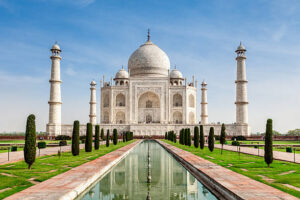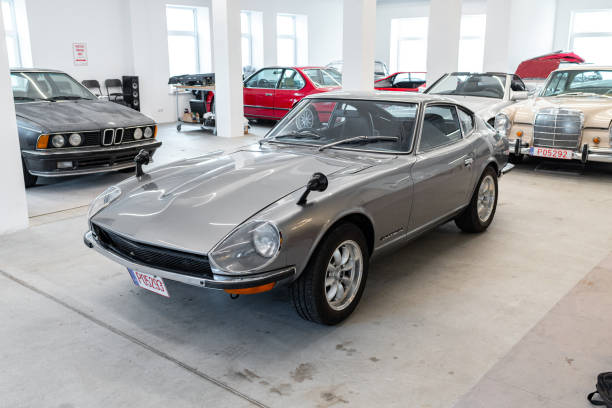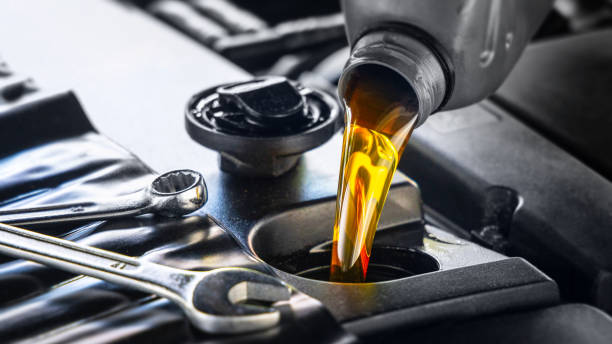Classic cars evoke a powerful sense of nostalgia, taking enthusiasts back to simpler times when driving was a pleasure, not just a necessity. This emotional connection keeps them culturally relevant.
Many people associate classic cars with memories of youth, family road trips, or time spent with loved ones. These personal stories create a sentimental attachment that modern vehicles often lack.
Old cars often represent an era where craftsmanship and style were paramount. Driving or restoring a classic is a way to relive those moments and preserve the feeling of a bygone generation.
Nostalgia gives classic cars their enduring value. Their presence in modern garages and shows reflects a collective longing for the elegance and simplicity of the automotive past.
2. Unique Design and Aesthetic Appeal
Classic cars boast designs that stand apart from today’s aerodynamic and utilitarian builds. The bold curves, chrome details, and vibrant colors make them artistic expressions of their era.
Unlike modern cars that prioritize function and efficiency, vintage vehicles emphasized individuality and visual drama. Each model had a distinctive silhouette that could be recognized from afar.
These design elements spark admiration even from non-enthusiasts. Classic cars draw attention on streets and at shows, offering a visual journey into history that few other objects provide.
Collectors often describe them as “rolling sculptures.” Their hand-built quality and stylized details reflect an attention to design that is rarely found in mass-produced vehicles today.
3. Symbol of Status and Style
Owning a classic car has long been a symbol of style and status. Whether it’s a vintage Corvette or a 1960s Mustang, these vehicles represent class and individuality.
They serve as status symbols not just for their rarity but also for the sophistication they project. Driving one makes a statement that transcends wealth—it signals appreciation for history.
Celebrities and influencers often showcase classic cars in music videos or social media, associating them with luxury and timeless cool. This continues to elevate their modern-day appeal.
Classic cars tell the world that the owner values authenticity and character. They’re not just vehicles—they’re extensions of personal identity and refined taste.
4. Craftsmanship and Engineering Excellence
Classic cars reflect an era when engineering and craftsmanship mattered deeply. Built with care and precision, these vehicles often involved more human hands than robotic assembly lines.
The materials used—real wood, hand-stitched leather, and metal—add to the appeal. They remind us of a time when quality wasn’t sacrificed for cost-saving measures or production speed.
Owners often marvel at the mechanical purity of vintage cars. No computers, just raw mechanical engineering that required deep understanding to maintain and drive.
This craftsmanship makes classic cars more than transportation—they’re heirlooms. They stand as monuments to what human skill and ingenuity could achieve before automation took over.
5. Cultural Influence and Media Presence
Classic cars have a strong presence in films, music, and pop culture. Think of the DeLorean from Back to the Future or the Charger in Fast and Furious—these are icons.
Their role in pop culture has immortalized them. These vehicles are often more than props; they help define characters, settings, and storylines, rooting themselves in our cultural memory.
Music videos, magazines, and video games also contribute to their iconic status. Their image represents rebellion, freedom, or luxury, depending on the context they appear in.
This ongoing representation in popular media ensures that classic cars stay relevant across generations. They continue to influence perceptions of style, freedom, and adventure.
6. Community and Social Connection
Classic car enthusiasts often form tight-knit communities centered around a shared passion. Car clubs, local shows, and online forums create spaces for connection and collective admiration.
These communities provide more than just technical advice—they foster lifelong friendships. Owning a classic car becomes a social experience, not just a personal hobby.
Events like classic car rallies or “cars and coffee” meetups attract enthusiasts of all ages. They serve as cultural gatherings where stories, tips, and history are exchanged freely.
Such social engagement strengthens the cultural role of classic cars. They unite people across generations and backgrounds through a shared respect for automotive history.
7. Investment and Financial Value
Classic cars have proven to be sound investments for many collectors. Certain models appreciate significantly in value, making them desirable assets in addition to beautiful machines.
Unlike modern cars that depreciate quickly, well-maintained classic vehicles often hold or increase their value. Rarity, condition, and historical significance all play roles in their worth.
Auctions frequently see classic cars fetching six or even seven figures. This economic value gives them an aura of exclusivity that fuels demand among elite collectors.
The financial aspect also drives restoration and preservation efforts. When people invest time and money into classic cars, it’s often with the confidence that their value will endure.
8. Educational Opportunities and Skill Building
Restoring or maintaining a classic car teaches valuable hands-on skills. It’s a hobby that combines engineering, history, and artistry into a deeply engaging educational experience.
Young mechanics and hobbyists learn about engine systems, metalwork, and even upholstery by working on vintage vehicles. It’s practical learning that inspires curiosity and creativity.
These cars also serve as historical artifacts that showcase how automotive technology has evolved. Schools and museums use them as teaching tools to engage students with real-world history.
Learning from and working on classic cars offers more than nostalgia—it creates a bridge between generations through shared knowledge, craftsmanship, and passion for learning.
9. Environmental and Sustainable Aspects
At first glance, classic cars seem less eco-friendly due to emissions. However, keeping and maintaining them reduces the environmental impact of new car manufacturing and battery waste.
Many enthusiasts argue that preserving a classic is a form of recycling. Instead of constantly replacing vehicles, they restore and reuse existing resources in a sustainable way.
Some owners even retrofit classic cars with electric engines, combining old-school aesthetics with modern eco-conscious technology. This fusion shows how adaptable and forward-thinking the culture can be.
Thus, classic cars aren’t necessarily enemies of sustainability. When approached thoughtfully, they align with values of reuse, longevity, and reducing waste through mindful restoration.
10. Escape from Modern Technology
Modern vehicles are packed with touchscreens, sensors, and computer-controlled systems. Classic cars offer a refreshing escape—pure mechanical control, free of digital distractions.
Driving a classic requires more focus and engagement. There’s no autopilot or endless alerts. It’s about feeling the road, shifting gears, and being truly present in the moment.
This analog experience appeals to people overwhelmed by technology. It’s a form of digital detox that connects drivers with a more tactile, visceral form of transportation.
Many classic car fans describe it as therapeutic. In a world of automation, vintage driving brings peace and a sense of real control that few modern cars can replicate.
11. Preservation of Cultural Heritage
Classic cars are historical time capsules, preserving cultural identity and societal values of the past. They reflect changing tastes, economic shifts, and technological breakthroughs of their time.
Museums and collectors treat them as historical artifacts. Their preservation ensures that future generations understand the evolution of transportation and the lifestyle of earlier decades.
Governments and organizations support this cultural preservation through heritage grants and exhibitions. These cars aren’t just old—they’re important pieces of living history.
By maintaining classic cars, we keep a part of our global story alive. Their survival offers insight into our collective journey through innovation, design, and human aspiration.
12. Inspiration for Future Design
Classic cars continue to influence modern automotive design. Many new models borrow aesthetic cues from the past—retro styling, bold lines, or familiar emblems rooted in classic legacy.
Designers often revisit old blueprints for inspiration. Vehicles like the Ford Mustang or Dodge Challenger maintain their lineage while evolving with modern performance and features.
These callbacks serve dual purposes: attracting nostalgic buyers and honoring brand heritage. They remind consumers of a time when cars were more than machines—they were cultural statements.
In this way, classic cars don’t just exist in museums or private collections. They actively shape the future of automotive design through their timeless beauty and engineering principles.












